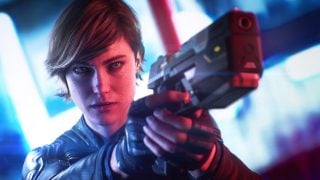Welcome to the Character Column! Each week, I’ll be taking a look at a different character from Nintendo’s long and esteemed history, and I’ll analyze what makes them interesting, nuanced, or just plain memorable. Whether they’re heroes, villains or NPCs, I’ll explain why they deserve respect or love from the fanbase and a place in video game history.
Last week we covered the enigmatic Zero, and this time, we have a very special edition, as we cover not one, not two, but… er… roughly ten to 13 different characters! That’s right, we’re talking about good old Pokémon this week, conveniently timed around the release of Pokémon GO (which I swear I didn’t plan – I scheduled this months ago). And when it comes to Pokémon, who are more memorable than the numerous rivals you encounter on your journeys?
Pokémon rivals are a long-standing series tradition, and it’s easy to see why. It’s always good to have an opposite force in your adventure to encourage you to become stronger in your quest to be a Pokémon master, so let’s examine how that rival has changed as the series has gone on, shall we?
Gen I – A cocky son of an Oak
The Red/Green/Blue/Yellow rival is forever the most iconic one in the series, to the point where if you say “Pokémon rival” he’s probably the one that pops into your head. He goes by many names: Blue, Gary, Green, Shigeru… I prefer Green myself, but Blue is more common so we’ll go with that. Blue is the classic combatant from a teenage movie from the 80’s – an arrogant, smug-faced guy who seems one step ahead of the protagonist at every turn. His ego rubs the player the wrong way, filling him/her with the desire to kick his butt whenever possible. He’s a pretty simplistic character, but given that this was the franchise’s baby steps, it works just fine.
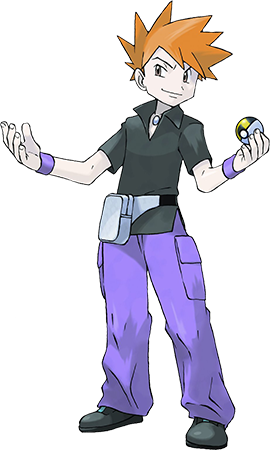
Blue also serves to deliver an important moral (?) to the player at the end of the game: that Pokémon should be treated as more than just tools, and that they shouldn’t be neglected in favor of increasing their battle prowess. After you defeat him at the Pokémon League, his granddad, Professor Oak, gives him a stern lecture on why he lost, praising the player for his care and kindness. While a good thing to remember about pets in real life (though I sincerely hope you’re not getting them in animal fights), it doesn’t quite work in game given that there’s no affection or friendship mechanics yet. And given the breeding crazy, gene pool selective metagame that has evolved over the years… well, the game mechanics don’t quite reflect what Professor Oak lectures about. Alas, the ludonarrative dissonance isn’t a big issue, because… well, it’s Pokémon. The logic inherent in these games isn’t that great, to be frank.
Blue is also the only rival to transcend generations, appearing as the Viridian City Gym Leader in G/S/C and their remakes. He also shows signs of character development – he’s less boorish, doesn’t end off conversations with “Smell ya later,” and has begun to treat his Pokémon with respect (as can be seen by the fact that his Pidgeot now knows Return, a friendship-power-based move). It’s nice to see that he took his grandfather’s stern words to heart. His maturity is a welcome change from the first gen, and something I appreciate about Gen II quite a bit.
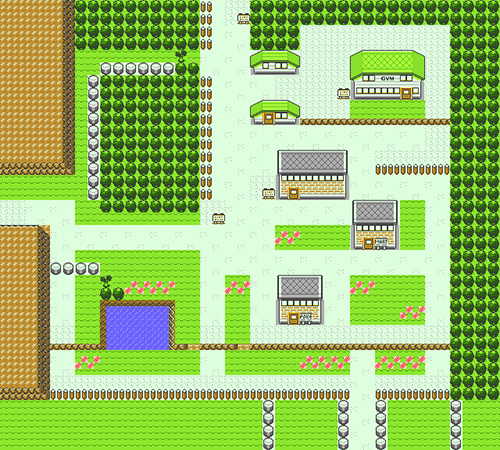
Overall, there’s not much to say about Blue. He starts off as a jerk, and he eventually grows up a little. I’m not gonna go into all those weird fan theories about his Raticate dying and whatnot, because his simplicity works – his jerkishness makes you want to take him down a peg or two. An effective rivalry.
Gen II – All that glitters is not Silver
The rival of Gold, Silver and Crystal – whose name is pretty universally regarded as Silver (or, if you’re one of those smart alecks, “???”) – continues the role of Blue in Gen I. He’s haughty and even nastier than Blue, once again filling the player with burning desire to beat him. And what’s more, Silver is an outright criminal, stealing one of Professor Elm’s Pokémon for his own use, and showing little to no remorse about it. It borders sociopathy at times. Some even say he’s more villainous than Team Rocket at times, though it’s a bit difficult to compare – at least Silver isn’t committing illicit activities on a widespread scale.
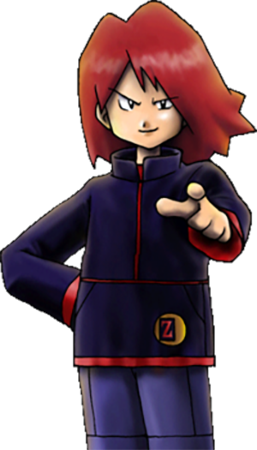
Speaking of Team Rocket… A wrinkle was added to the remakes of HeartGold and SoulSilver, where it was revealed that Silver is none other than Giovanni’s son. While it had been hinted at previously in FireRed and LeafGreen (and the plot point appeared earlier in the Pokémon Adventures manga), in HGSS it’s outright stated. This also seems to be the source of Silver’s frustrations and fears: that he believed his father to be weak, and thus feared weakness within himself. Thus Silver’s arc is similar to Blue’s in a way – about realizing the flaws within himself, and working to better them. The added past and family complications add another layer, but it isn’t too different.
Which isn’t to say Silver’s a bad character – not at all. He’s by far the most villainous rival the series has had (unless you count N, in which case it’s contentious) and his struggle appears to be more internal than external, dealing with personal issues of grief and doubt instead of the possibility of losing to you. Given that the series wouldn’t do the more antagonistic style of rival again, it makes me wonder what would happen if Game Freak kept going in that direction. Oh well. It’s not as if later rivals were necessarily worse…
Right?
Gen III – Two for the price of one-ish
Ruby, Sapphire and Emerald were the first games to have not one, but two rivals: Brendan/May and Wally. This was also a departure from the classic aloofness of Blue and Silver, as all of these characters tend to be nice and friendly in their competitive nature. Alas, one of them is rather dull and without much meaningful character to them, leaving a fairly uninteresting result in their wake. The other is Wally.
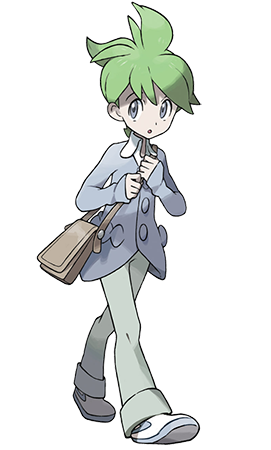
… Okay, perhaps a bit harsh, but I’d say of all the various rivals throughout the years, Brendan and May are perhaps the weakest (not in terms of strength, but character). They’re nice, sure, but they don’t have much more to them. You beat them, they laugh it off and commend you for your Pokémon’s strength. They give you some goggles. Admittedly, Brendan is a bit more classic in his cockiness while May is more genial… but there’s not much in the way of an arc here. And there isn’t really enough flair or flavor to make them stand out compared to other, later, also nice rivals. They’re not completely awful, they’re just… plain. That’s all.
Wally, on the other hand, is somebody I have to vouch for. Time and time again I’ve seen him slandered on the internet for being a wimp and a weakling and a lucky punk who got a Ralts by sheer chance – well, y’know what? Wally’s cool! Well, maybe not ‘cool’, but… interesting! He starts off as a sickly, lilly-livered kid who needs help catching his own Pokémon, and by the end of the game he’s a matured, tough guy who can stand toe-to-toe with the very person he idolizes – you! It helps that he has an awesome battle theme in the remakes. Admittedly, he could’ve shown up and affected the plot a little more, but I still think he’s a character who doesn’t get enough credit. Heck, in ORAS, he has one of the strongest trainer teams in any Pokémon game ever!
Gen IV – A Barry special rival
Diamond, Pearl and Platinum returned to one rival (unless you count Lucas/Dawn, who never really battles you or poses as an obstacle during your journey, so…). Just as Silver was a logically more extreme version of Blue, Barry is a more radical realization of Brendan and May, having his friendliness and hyperactivity bumped up to 11. As your childhood friend, you engage in the usual genial battles along the path to the Pokémon League, usually after he crashes into you with a mighty “thud.”
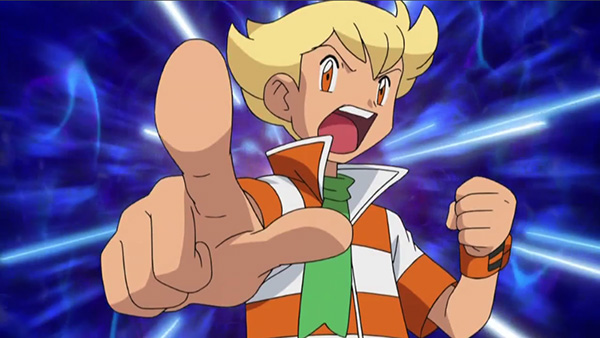
Barry does have a few more character traits to speak of – namely, his simultaneous hastiness and lateness, as well as the fact that he seems to bump into everyone and everything. Besides making him seem impatient, it also rubs a lot of NPCs the wrong way, as many chide him for his bustle. It almost reads like a parody of the player character – constantly running around and bumping into things, doing things on their own schedule… Heck, it turns out that Barry’s dad (head of the Battle Tower) is just like him! Which doesn’t mirror the protagonist, because when does the hero of a Pokémon game have a father (besides Norman, of course)?
Barry also has a nice arc, just like most of his predecessors. He feels awful about letting Team Galactic succeed at their plans over at Lakes Verity and Acuity, prompting the kid to have a bit of a guilt trip. He redeems himself by helping you take on Jupiter and Mars on top of Mt. Coronet, and as the game progresses he learns how to slow down a little. Not to mention he has the strongest rival team in the entire series by the end of Platinum, and the second strongest overall (eclipsed only by HGSS Red). Barry isn’t the deepest or most memorable rival in the series, but he manages to get by on his pure affability. He’s just a fun character to have as a competitor. And in the case you find him annoying rather than endearing… well, that just motivates you to beat him, doesn’t it?
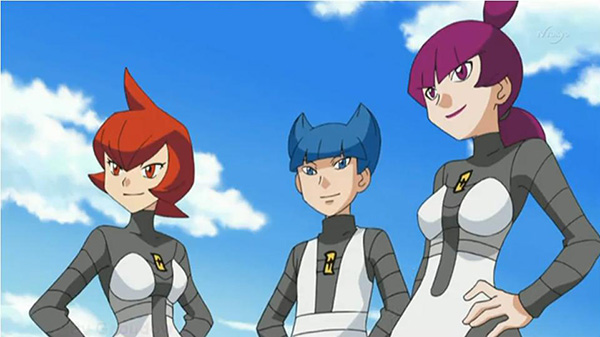
Gen V – Shades of gray
Confession time. Black and White are my favorite Pokémon games of all time. There are a lot of reasons why, but the primary reason has to be the excellent story and characters. For the first time in the series, it feels like there’s a lot of interesting personalities with a great amount of depth to them – Gen IV definitely developed the point a little bit with Cyrus and Cynthia, but Gen V was truly the time when Pokémon’s plot got interesting. And the rivals are no exception.
Black and White had two rivals to their names: Cheren and Bianca (there’s also N, but that guy has enough going on to warrant a Column entry all to himself). Their names translate to Black and White in different languages (Bulgarian and Italian, respectively) and each encounters their own arc with the confines of B/W’s story. Unlike the previous generations’ rivals, however, both Cheren and Bianca have proper coming-of-age stories in their own right.
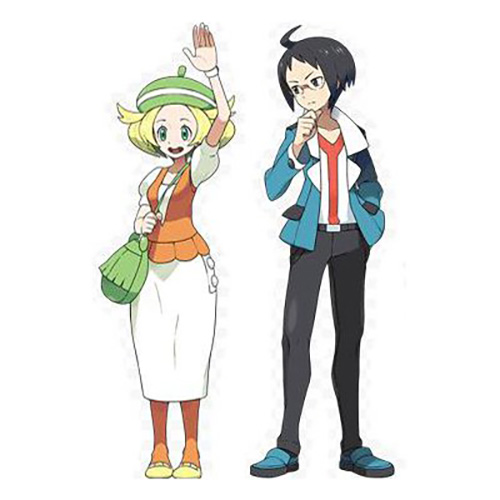
Bianca is a cheerful, yet clumsy, girl who the player character’s known since childhood. Despite her wide-eyed idealism and go-getting attitude, she sets out on her journey without knowing what she wants to do in the world of Pokémon. And she almost immediately encounters setbacks – her father is against her traveling, she continually loses to the player, and she has one of her Pokémon stolen by Team Plasma. It all comes to a head in Nimbasa, where her father practically tries to drag her back home – and might’ve done it too, if not for the intervention of the city’s Gym Leader, Elesa. Bianca proclaims that she’s going to find what she wants to do, alongside her Pokémon, and her dad eventually acquiesces to her wishes. Eventually, Bianca contents herself becoming Professor Juniper’s assistant, a role she continues in the sequel.
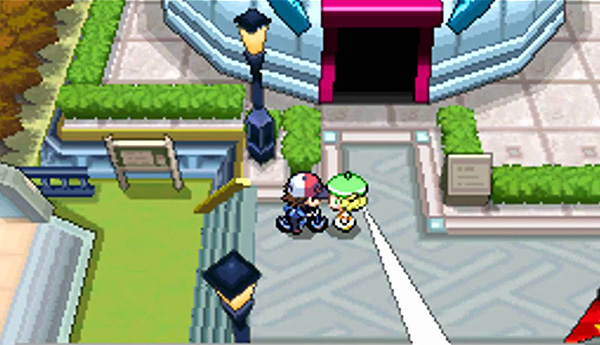
Cheren, meanwhile, is a determined, somewhat haughty fellow with dreams of becoming the Champion. A rather intense guy, Cheren pursues his goals in a manner not dissimilar to Blue or Silver (though Cheren’s much more amicable), going so far as to call Team Plasma “a waste of oxygen.” But why does he desire to be the Champion? Well… he doesn’t really know, besides holding the title for the sake of it. This becomes the core of his development, as Alder questions Cheren’s motivations and dreams beyond the point Cheren has thought out. As a result, Cheren mellows out a little, becomes less focused on a desire that he holds for no real reason, and eventually settles for becoming a Gym Leader in B2/W2.
Both Bianca and Cheren do an excellent job of tying into two core themes of Black and White – namely, perspective and dreams. True to their naming, they play almost like inverse versions of each other – Bianca being one with no strong desire who wants to find purpose, and Cheren being one with a grand dream who stops at nothing for his goal. And yet both are ultimately struggling to find a place in the world, a place for their dreams to take fruition. They represent the often-felt disillusion and lostness of youth – completely unsure of who you are, what you’re doing, or where you’re going. And along the journey, the two of them find their own paths, their own way to believe in – not unlike the player or N. It’s this sort of character development that makes Gen V really shine in my eyes.
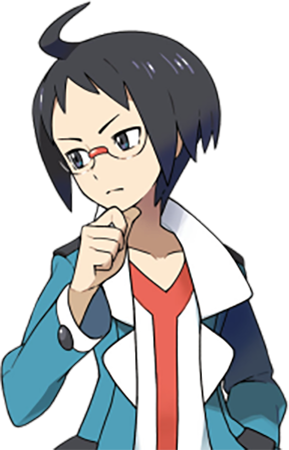
Gen V.5 – Are Hugh talkin’ to me?
While some people contest the quality of Black 2 and White 2 for one reason or another, I feel as if they’re a worthy followup to the first games, mostly for continuing the story arc in an interesting direction that doesn’t necessarily retread old ground. And while Cheren and Bianca are still around, having influence over certain elements of the plot, the rival position belongs to one hothead alone – Hugh.
Hugh’s one of the more flawed rivals out there – probably the most flawed since Gen II. At first, he seems like your average shonen anime hero – hot blooded, filled with vengeance, and desiring to crush evildoers under the heel of justice. After having his sister’s Purrloin stolen at a young age, Hugh has vowed revenge against Team Plasma ever since, being filled with rage and discontent upon any interaction with them. This sort of righteous anger seems perfect for taking down bad guys… but things aren’t so black and white (insert laugh track here).
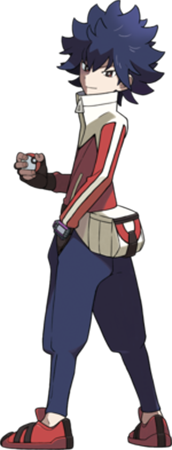
A big theme of B2/W2 is redemption – much of Team Plasma, including N, want to redeem themselves after realizing the extent of the damage they caused. Others, such as Ghetsis, desire to hold the reins of power for themselves, not atoning for their actions in any way. The core of Hugh’s character development comes from this conflict – how his vision of Team Plasma as a great evil clashes with those trying to redeem themselves right before his eyes, and his hatred continues to grow and blind him. While he eventually realizes his obstinance is doing him no good and only furthering the conflict between him and others, Hugh demonstrates a great moral for both in game and in real life – that no one is beyond forgiveness, and nobody cannot find redemption.
I like Hugh. I’ve seen him take a bit more heat than other rivals, mostly due to perceptions of him as a white knight or just annoying, but I think some people don’t realize that that was part of the point of his character – that you shouldn’t be set in your ways beyond the point of being able to believe something different than the worldview you’ve created for yourself. Hugh’s name in Japanese – the homonymic Hue – shows how he relates thematically to the rivals from the first game, struggling to change his perspective in a world of a different color than the one he imagined.
Gen VI – What can be done?
X and Y technically have four rivals… but for the purposes of this article, we’ll primarily be talking about Calem/Serena, as they’re the most interesting of the bunch. It’s not as if Shauna, Trevor and Tierno are bad; they just don’t have a metric ton to them, especially compared to rivals of previous gens. And Calem and Serena are far more worthy of attention, for they represent something never before seen in a rival – namely, they realize how much they suck.
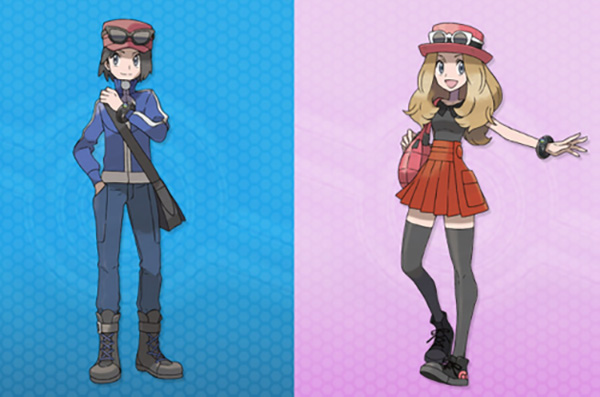
Okay, that’s a little harsh, but that does form the core of his/her character. In Gens III-V, the friendly rivals always took a “Darn, I lost! I’ll get you next time!” attitude towards their defeat, never really bearing ill will towards the player. But Calem and Serena are different – as their losses begin to pile up, they begin to show despair and frustration, wondering exactly what they’re doing wrong in their Pokémon training. It doesn’t help that they start off as the group’s de facto leader, only to be quickly surpassed due to the player’s prowess.
It’s difficult to not pity your rival in these instances. They’re not really doing anything mean or wrong – but at the same time, there’s no option to give up or lose, so you have to beat them. It’s just the way of things. Talking to the rival, it feels almost as if they imagine themselves to be the hero of the story, trying to be the best like no one ever was… but they don’t have the fancy protagonist powers. You do. It’s quite lamentable, really. At least the rival eventually resolves to be nice and protect his/her friends no matter what, finding a purpose in his/her own right. While the connection to the main plot is somewhat tenuous. Though to be fair, X/Y’s story is a bit… uneven in a lot of ways. But that’s a conversation for another time.
So. What have we learned?
I dunno. This ain’t a freakin’ college course. You gotta pay for that stuff! Don’t expect it for free!
… Ahem.
There have been more Pokémon rivals than there have been Generations, at this point. We’ve seen good, bad, and every which way in between – everybody’s got their favorite, and one they’re not so hot on, and so on. While I’d say Cheren and Bianca are my personal besties, I’d admit just about every rival has merit in one way or another. And I’m sure rivals in the future will be interesting in their own right.
Stay tuned
That’s all for this week’s Character Column! Tune in next time, when we talk about the original hipster gamer, Cranky Kong. Until then!
Leave a Comment“Even if hurt, my Pokémon will fight for me with just one command. I think I’ll value and trust your Pokémon more if you keep that fact close to your heart. What can I do for these Pokémon? What should I do? That’s right! I battle with everything to find the ideal relationship between Pokémon and people!”
– Cheren, Pokémon Black 2 / White 2

